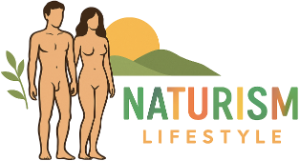In the realm of social movements that celebrate the human body, two terms often come up: naturism and nudism. While they are sometimes used interchangeably, they represent distinct philosophies and lifestyles with nuanced differences. Understanding these differences is essential for anyone exploring or participating in these communities.
Naturism, also known as social nudity or naturist philosophy, emphasizes a holistic approach to life that integrates nudity with a strong connection to nature. It advocates for the acceptance of the human body as it is, promoting body positivity and self-acceptance. Naturists believe that being nude in natural settings, such as beaches, forests, and gardens, fosters a sense of freedom, equality, and harmony with the environment. This lifestyle often includes environmentalism, healthy living, and respect for all living beings. Naturist communities and resorts typically offer a range of activities that encourage outdoor recreation and environmental stewardship, from hiking and swimming to organic gardening and conservation efforts.
Nudism, on the other hand, focuses primarily on the practice of nudity itself, often in social or recreational contexts. Nudists advocate for the normalization of nudity in everyday life and believe that it should not be associated with shame or embarrassment. This lifestyle emphasizes the physical and psychological benefits of being nude, such as increased comfort, relaxation, and a sense of liberation from societal norms and constraints. Nudist environments, including clubs, resorts, and beaches, provide spaces where individuals and families can engage in everyday activities without the burden of clothing. These activities may include sunbathing, swimming, sports, and social gatherings.
While both naturism and nudism advocate for the acceptance of the naked body, naturism incorporates a broader philosophical perspective that includes environmental and ethical considerations. Naturists often view their practice as part of a larger commitment to living in harmony with nature and promoting sustainable lifestyles. This might involve efforts to reduce one’s ecological footprint, support for organic and locally-sourced foods, and participation in conservation projects. In contrast, nudism is more focused on the immediate experience and benefits of being nude, emphasizing personal comfort, body acceptance, and the simple pleasure of feeling unrestricted by clothing.
Another key difference lies in the way these movements perceive and interact with the human body. Naturism tends to approach the body with a sense of reverence and respect, often considering it a natural and integral part of the environment. This perspective encourages a non-sexualized view of nudity, where the naked body is seen as pure and beautiful in its natural state. Nudism, while also promoting non-sexualized nudity, is more pragmatic in its approach, advocating for the freedom to be nude in various settings without necessarily tying it to a broader environmental or philosophical agenda.
The communities formed around naturism and nudism also reflect these differing philosophies. Naturist communities often emphasize a sense of belonging and mutual support, with members sharing common values related to environmentalism and ethical living. These communities may organize educational programs, workshops, and events that promote sustainable practices and environmental awareness. Nudist communities, while also fostering a sense of camaraderie and acceptance, are more likely to focus on the social aspects of nudity, organizing events and activities that bring people together to celebrate the freedom and joy of being naked.
In conclusion, while naturism and nudism share common ground in their advocacy for the acceptance and practice of nudity, they differ in their underlying philosophies and approaches. Naturism integrates nudity with a broader commitment to environmentalism and ethical living, promoting a holistic lifestyle that connects the human body with nature. Nudism focuses on the benefits and normalization of nudity in everyday life, emphasizing personal comfort and freedom. Both movements offer valuable perspectives on body positivity and the human experience, providing diverse ways for individuals to embrace and celebrate their natural state.

